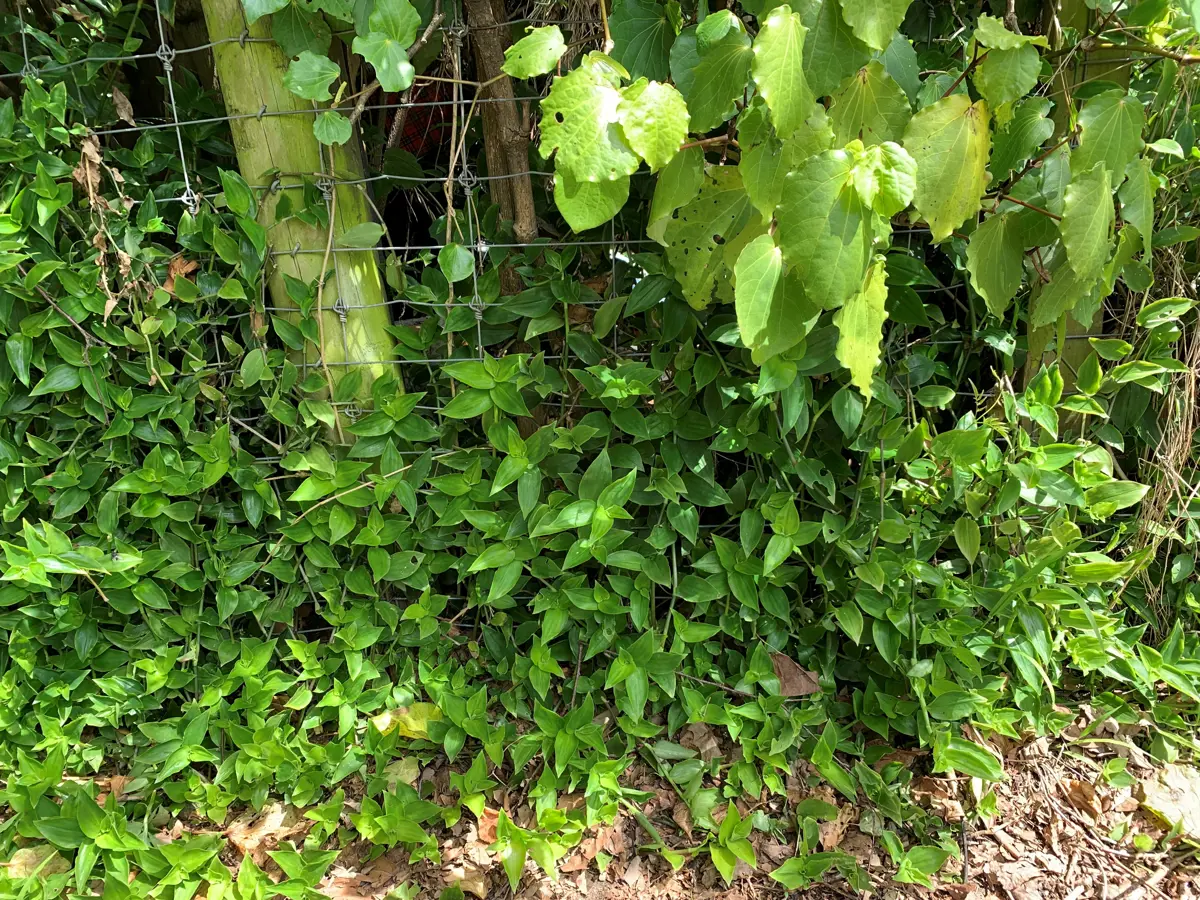Pest plants
Aotearoa New Zealand has more than 10 times the number of exotic to native plant species. The Department of Conservation's list of environmental weeds 2024 contains 386 species – an 18 percent increase on the previous list from 2008.
Plants are categorised as environmental weeds if they are established in the wild and have significant impact in natural ecosystems.
Species of particular concern in our district include boneseed, German ivy, Cape ivy, English ivy, blue morning glory, tradescantia, wattle, Japanese honeysuckle, pampas, banana passionfruit, arum lily, Old Man's Beard, blackberry, cotoneaster, marram grass and climbing asparagus.
Greater Wellington (GW) is responsible for controlling pest animals and plants throughout the Wellington region. For more information and advice, contact GW’s Biosecurity team on their Greater Wellington website.
They maintain a great database of the pest plants and animals in our region. See Pest and Weed Central.
We control pest animals and invasive weed species as part of managing ecologically significant sites, parks and reserves. We also provide support and advice to landowners with ecological sites on their properties.

Find out more about pest animals in Kāpiti.
Agapanthus
This pretty pest forms pure stands, excluding all other species and becoming the dominant species almost everywhere it grows. It causes massive biodiversity loss, especially of rare coastal herb, grass and shrub species.
How to manage it: Dig out scattered plants. Dispose of corms and root fragments at a refuse transfer station or dry them out and burn them. Usually follow up with spraying.
Holly’s war on weeds started with agapanthus. Clumps and clumps of agapanthus, stretching approximately 20 metres up a slope at the rear of her new home in Raumati South.
Armed with a hand-held grubber, she began the gruelling process of removing the pests which were choking a number of mature kanuka trees.
Agapanthus are very difficult to control and remove. They can survive mowing, grazing and spraying.
“You have to get the rhizome out as they can resprout from a tiny little bit left behind,” says Holly.
“My partner and I spent about 15 to 20 hours on our hands and knees removing two tonnes of agapanthus. It got to the point where I was dreaming about their root systems. They were so dense and old that there were no insects or fauna, and I found a dead hedgehog that had wandered in and gotten trapped.”
After saving the kanuka, the pair brought a digger in to clear the rest of the area, including a giant pampas grass.
Holly has since planted over 400 native trees and shrubs, including native substitutes to aid with bank stabilisation, and transformed her backyard into a wild wonderland for birds.
Keeping the weeds at bay is a constant battle though. Tradescantia continues to creep in at every opportunity and it’s a job that never ends.
Holly credits sources like Youtube, Twitter and Instagram for helpful information and inspiration during her garden transformation.
“A great place to start is the iNaturalist app which is great for identifying which species are weeds and will outcompete native flora and fauna,” says Holly.
Keep up the great work!
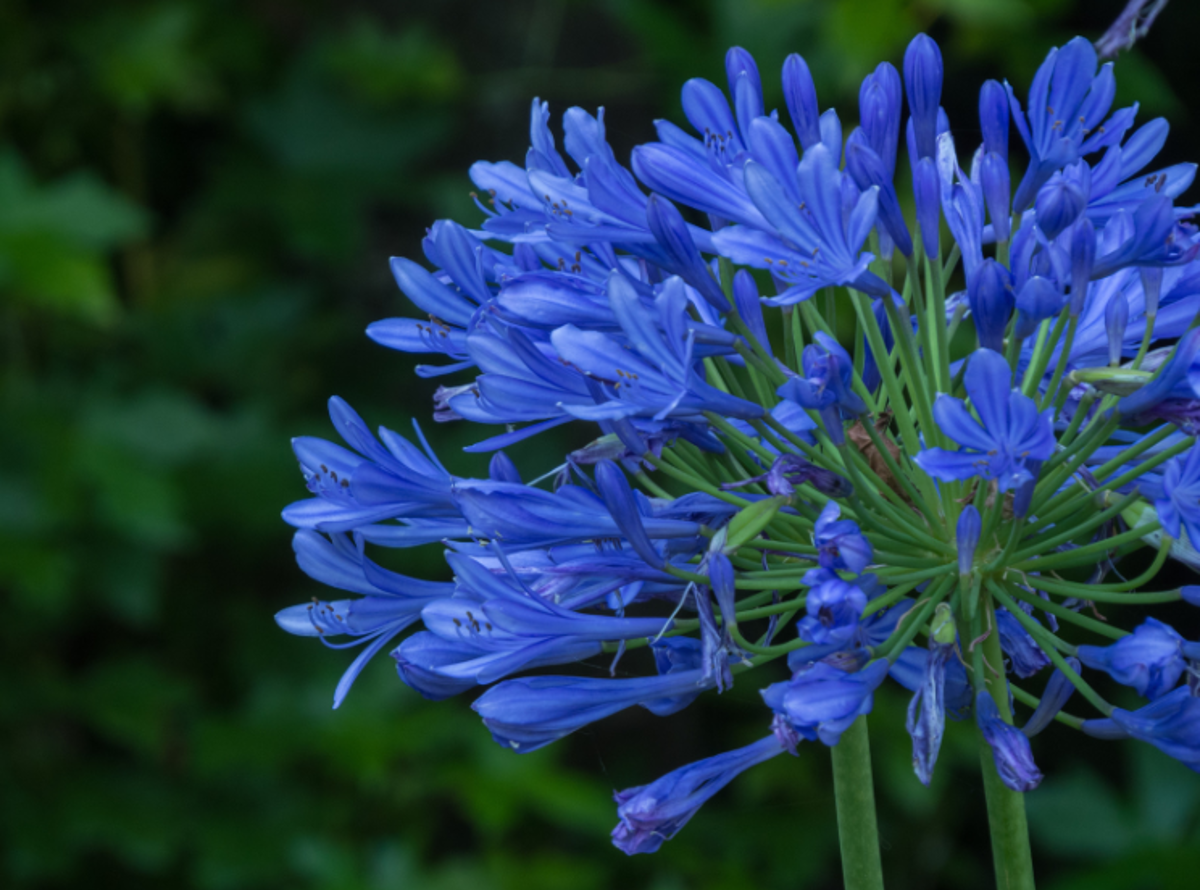
Banana passionfruit
This high-climbing vine with single, hanging, tubular pink flowers can grow up to 10m high, maturing to fruit after only one year. The large, sweet fruit contain many seeds that are dispersed by birds, possums, rats and feral pigs.
It thrives in coastal areas and blankets other vegetation, out-competing other plants and preventing native plants from establishing.
How to manage it: Hand-pull banana passionfruit whenever possible or dig the plant out at the roots. If you eat the fruit, don’t discard in garden waste as it will grow.
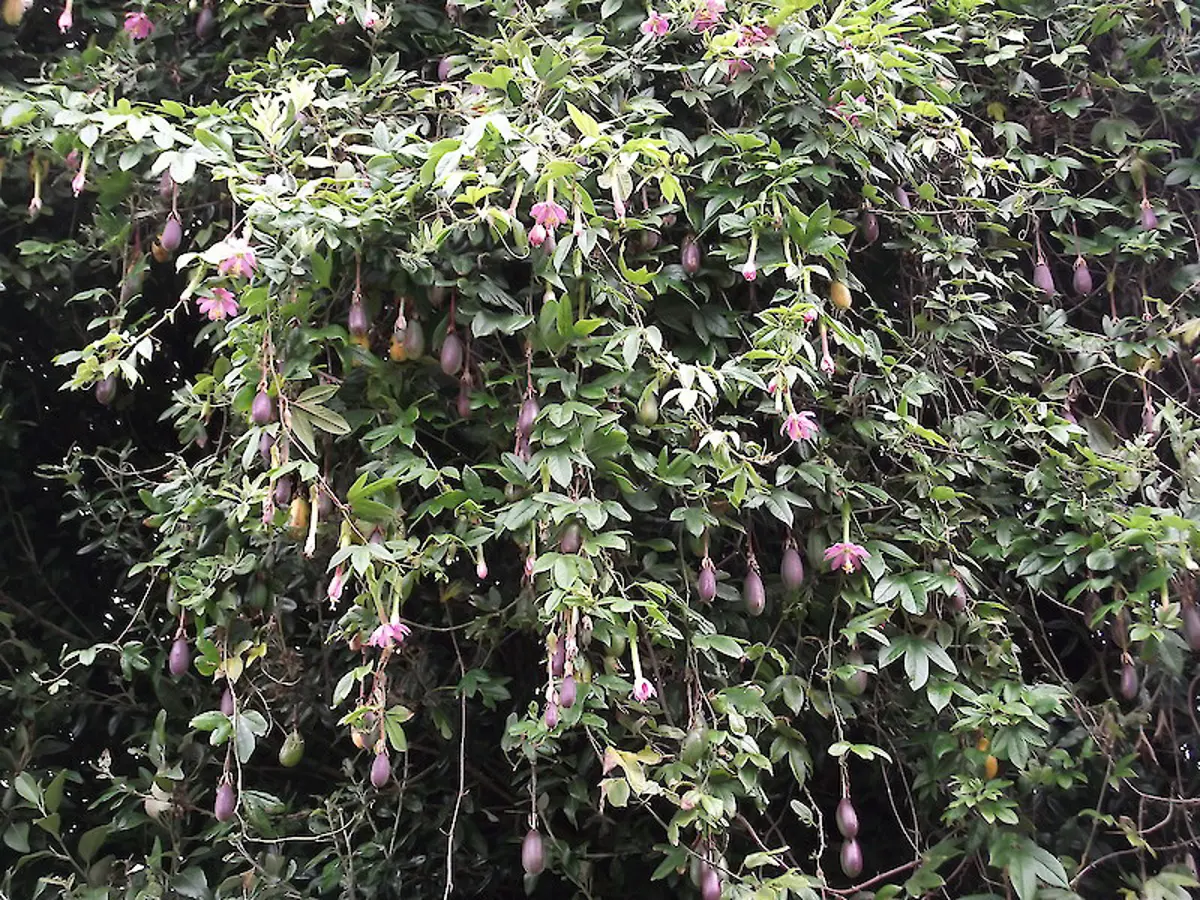
Photo: Weedbusters
Boneseed
This bushy, semi-woody, many-branched shrub or small tree can grow to 2–3 metres. It produces bright yellow daisy-like flowers from September to February. These are followed by hard oval green fruit that ripen to black, each containing a hard seed.
Boneseed loves coastal areas and quickly forms an incredibly dense cover that shades out other plants and limits access on sand dunes. A single boneseed bush can produce 50,000 seeds every year, and each seed can remain dormant for up to 10 years.
How to manage it: Hand-pull all but the largest plants when not in seed. Leave on site to rot down. Stump swab or spray with herbicide. Plants with seed must be buried deeply, burnt, or disposed of at a refuse transfer station.
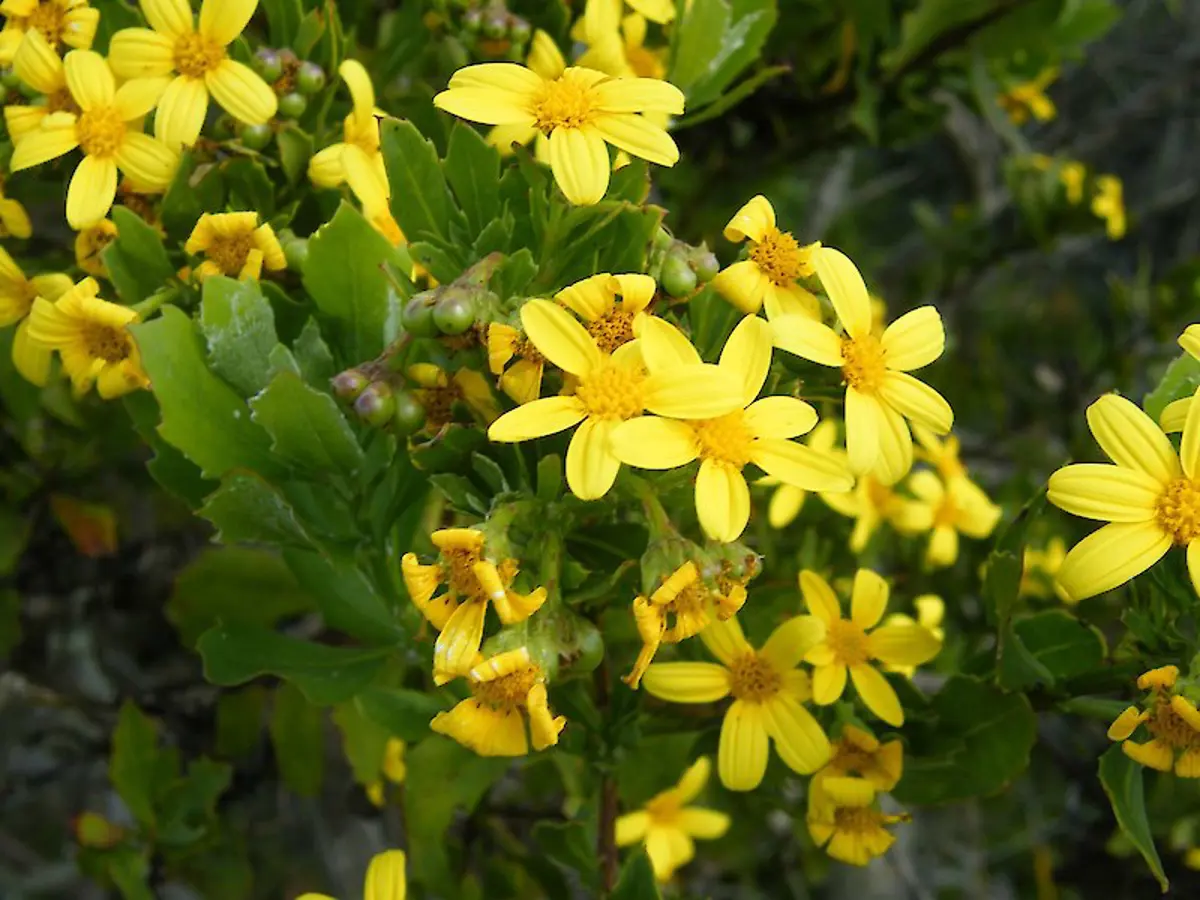
Photo: Weedbusters
Climbing asparagus
This thin, wiry smothering vine with fern-like foliage can expand rapidly, carpeting the ground and preventing the establishment of native plant seedlings. Climbing asparagus can also ring bark and kill established soft-barked shrubs and trees.
Tiny white flowers appear from September to December, followed from October to February by round berries that ripen from green to orange-red. It is very shade tolerant, resilient and spreads easily in birds dropping.
How to manage it: Climbing asparagus is difficult to control. Stem fragments readily resprout when broken off in the ground and tubers will often resprout following spraying.
Work your way in from the edge of the infestation, digging out tubers as you go. Make sure you dispose of these in rubbish bags where they can't resprout.
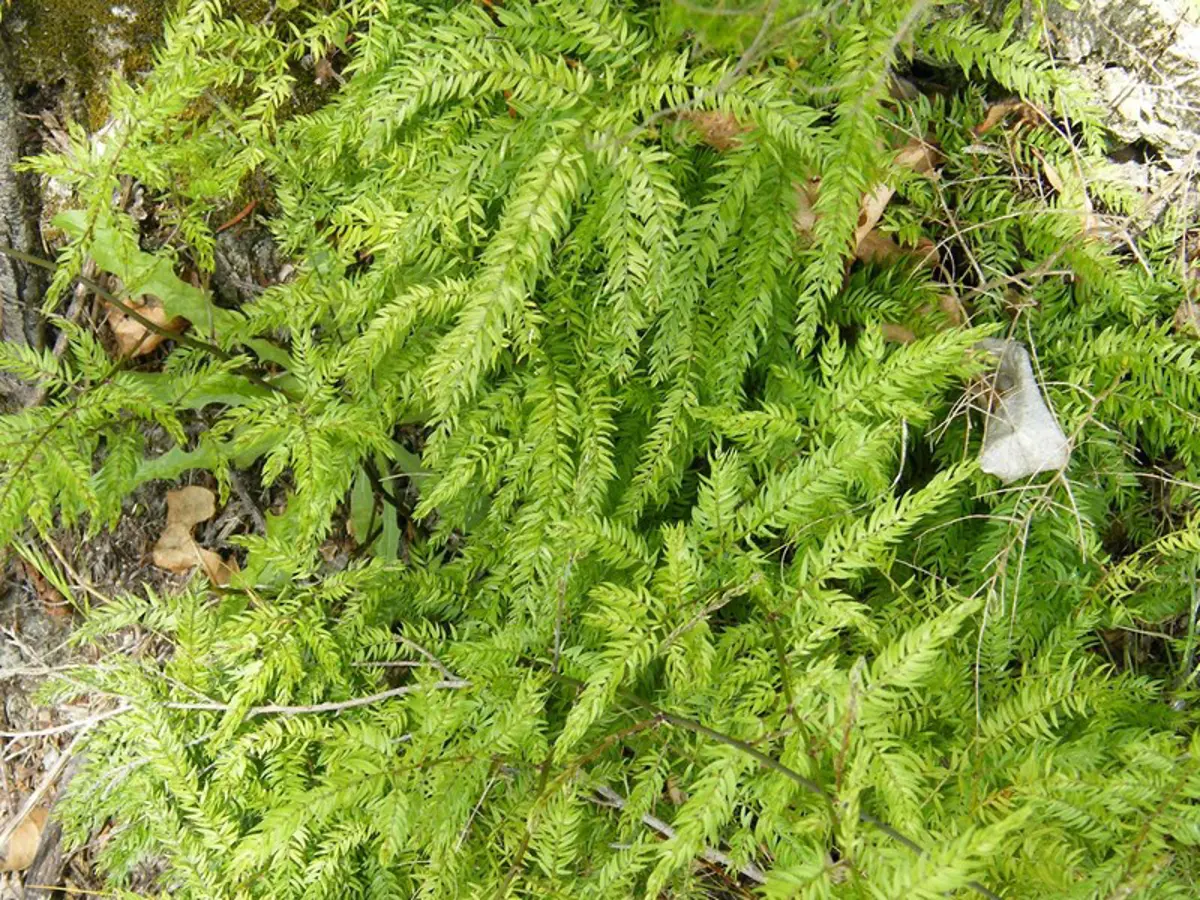
Photo: Weedbusters
Ivy
Ivy is an evergreen that clings to and climbs almost any surface. This relentless invader smothers and kills all plants from ground level to canopy, and prevents native plant seedlings establishing. The weight of an infestation can bring down branches or even a whole tree. Invasion into established forest is slow but persistent through the ground or canopy.
Birds readily spread seed when it is produced, but most spread is through pieces dumped with greenwaste. Gardens, roadsides, vacant land, and cemeteries are all sources of spread.
How to manage it: Individual vines can be pulled by hand when soil is moist. Vines covering the ground can be uprooted and gathered using a heavy-duty rake.
Vines climbing up trees can be cut a few feet from the ground and pasted with systemic herbicide to kill what’s left. Spraying with herbicide is best completed in summer.
Dispose of any plant and root material at the refuse station in general waste.

Pampas
Pampas is often confused with the native toetoe. This tussock-like grass grows 2–4 metres high and has flowering stems with fluffy white or pinky-purple flower head. Pampas also have dead leaf bases that spiral, resembling wood shavings. It will establish most easily in wet, sandy or bare soil. A good way to tell the difference is “toetoe = tough” where pampas leaves will easily snap off.
Pampas plants compete for space, light and nutrients with native plants. They form dense colonies and suppress the growth of other vegetation. These become havens for rats, rabbits and possums which burrow into the thick bases.
A single plant can produce millions of seeds over 10–15 years. Don’t substitute pampas for toetoe in floral arrangements as transporting and handling the flowerheads just spreads seeds even further.
How to manage it: Dig out seedlings or small plants. You can cut out medium-sized plants and/or spray with herbicide. Remove larger plants with a digger. Compost or leave on site to rot down. Burn any flowerheads or dispose in rubbish bags.
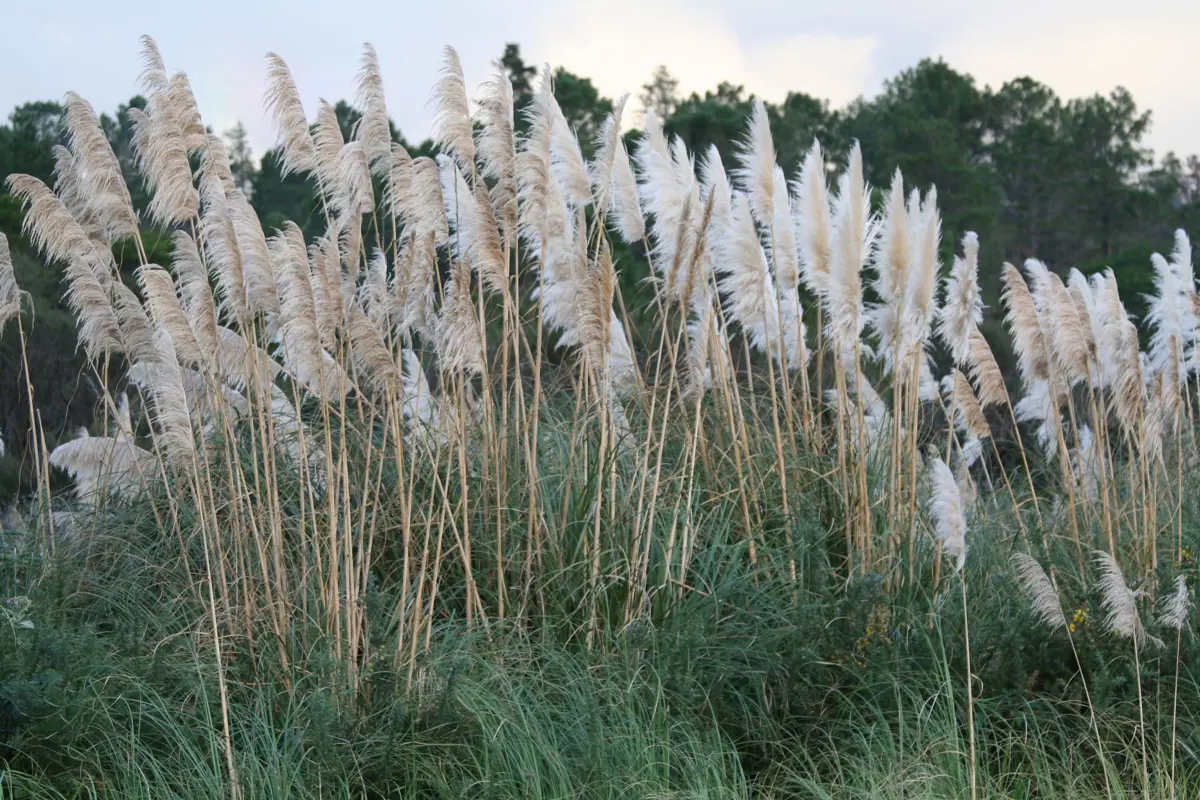
Phoenix palm
The biggest and most prickly pain, Phoenix palms can grow up to 18 metres tall with a robust trunk patterned with diamond-shaped scars left by fallen leaves. They have long arching green fronds on sharp spiny leaf stalks. These fronds are sharp and toxic, and continue to be a leading cause of hand surgeries in Aotearoa as the tip often snaps off after it penetrates a person’s skin.
You’ll see them everywhere throughout the coast – even our parks and reserves! They may even look pretty from a distance but up close, you’ll find rats and possums like to nest in the canopies. It is a prolific seeder with the potential to colonise a wide range of habitats and build an impenetrable sub-canopy. It can even reduce the water table and alter the form of dunes through sand build up around its roots, resulting in erosion elsewhere.
How to manage it: The best option is removal, but this can be costly as its best to use a professional arborist.
Dig out seedlings and small plants and dispose of all material at a refuse transfer station.
For pruning, make sure you use the right safety equipment and the right techniques, such as puncture-resistant gloves, or get the experts in to do it. Go slowly, stride carefully and don’t shuffle (or you’ll catch a spike through the side of the boot). Stack fronds in piles facing the same way, with the butts all lining up. Don’t mulch fronds backwards.
Becky’s beef with phoenix palms started seven years ago, a few weeks after moving into her Raumati South home.
“I thought it was kind of pretty when I first saw it,” she says of the 15-meter-tall tree that towered over the backyard. That changed quickly though.
“The fronds began to fall so I started googling and learnt that spikes at the base of the foliage crown are razor-sharp and toxic. The tip will often snap off after penetrating the skin which causes infection as spikes can carry a rare type of fungus.
“Phoenix Palms are one of the leading causes of hand surgery in New Zealand. If you have one on your property, do yourself a favour and deal with it when it’s small – it will be a lot cheaper to get rid of!”
Eye protection, thick clothing and leather gloves are the minimum required for any work on these trees. Because of this, it can be safer to let a professional deal with any grooming or removal requirements.

Wandering willy/tradescantia
This groundcover weed invades quickly and shades out or strangles other plants. Leaves are dark green, shiny, smooth and oval with pointed tips. Creeping stems root at nodes where they touch the soil. White flowers are produced from December to January.
It likes damp and shaded areas and thrives all over the Kāpiti Coast. Dogs can develop a skin rash after frolicking through Wandering Willy.
How to manage it: Wandering Willy forms a dense mat and can be raked and rolled up. Work towards the centre and dispose of at a refuse transfer station, burn or bury deep.
Dropping fragments can spread an infestation so be methodical.
Spraying with herbicide is another option to eliminate this pesky weed.
